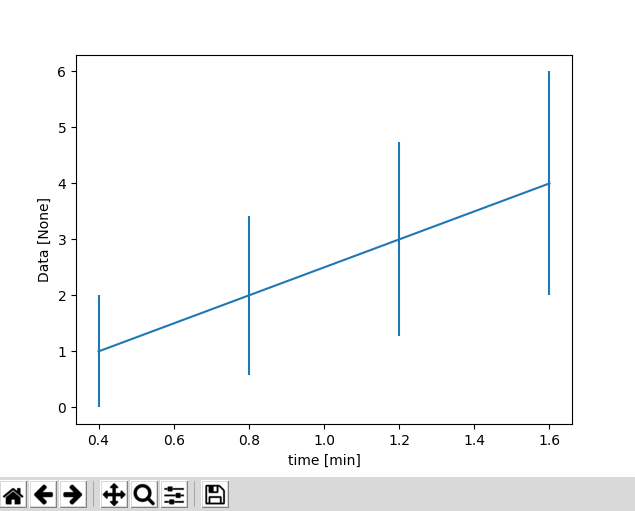Google Summer of Code 2019 | Final Report | OpenAstronomy | NDCube#
Google Summer of Code 2019 | Final Report | OpenAstronomy | NDCube#

GSoC FTW!#
For those who are geeky and want to see the PRs submitted…#
Here is the link where all my PRs for completing the project are present. > # Google Summer of Code (GSoC) is an online, international > #program designed to encourage university student participation in open source software development.
Details of my Organisation and Project#
Before I start writing my report, I would like to thank my mentors Daniel Ryan and Stuart Mumford. They have been quite helpful in guiding me through the project, and have been quite responsive. Special thanks to Nabil Freij, for guiding through the project here in SunPy/NDCube.
NDCube is the fundamental class of the ndcube package and is designed to handle
data contained in a single N-D array described by a single set of WCS
transformations.
NDCube is subclassed from
astropy.nddata.NDData and so inherits the same attributes for data, wcs, uncertainty, mask, meta,
and unit. The WCS object contained in the .wcs attribute is subclassed
from astropy.wcs.WCS and contains a few additional attributes to enable to keep track of its
relationship to the data.

SunPy: The Sub-Organisation that I worked in.#
My GSoC project was under OpenAstronomy, and NDCube is a SunPy affiliated subpackage for handling ND Data arrays and perform data-analysis on them.
NDCube is a SunPy affiliated package for easily dealing with ND-Data
cubes along with convenience method that allows the data cubes to be
sliced, attach meta-data to it, and easy to use plotting methods, to
visualize an ND-Data. It uses SunPy’s visualization to plot more than
>2D cubes and provides sliders to shift the different dimensions, so
even if users are using only 2D dimensions at a time, we can still
leverage the other dimensions.
My project with NDCube was to port the internal API to match all the proposals laid out in APE14 and make sure that NDCube works in the same manner as it was working. The project was particularly interesting because I had a first-hand chance of interacting with API designing and how the different patterns were used to implement that. NDCube uses FITS-WCS to interact with, but APE14 leveraged the NDCube to use any WCS object implementing all the base methods laid out in the proposal. This was really exciting and I had a chance to use gWCS along with FITS-WCS in NDCube.
Blogging and details of my work#
My weekly notes about my progress have been documented in my blog. Feel free to check out and suggest changes if needed.
Breakdown of my project#
As described in my proposal, I had broken down my project into three parts —
Porting NDCubeBase to use APE14
Porting NDCubeSequence to APE14
Support plotting in NDCube
All the associated PRs have been blogged in the PR post that I made earlier. Feel free to check them and gauge the progress that I made.
Some Visuals associated with my project#

Example of a WCS plotting with NDCube#

Example of WCS Line Plotting with NDCube#
My Experience with working with NDCube/SunPy#
Right from the start, I was really interested in working in SunPy, because of its amazing community and responsive mentors which I had planned to learn from them. The mentors were really helpful, right from designing the proposal to implementing them, always filling out on potential hurdles and rescuing me out every now and then.
I decided to list out the tasks which could not be completed, as the rest of the checkpoints were achieved successfully.
Here are some tasks which I had planned but could not be done
Writing gWCS test-suite for NDCube — This was an optional part but having spent time with the code-base a lot, I realized that this could be done in a short time. However, this being an optional part, got pushed right at the end, and eventually had to be dropped off from the weekly tasks. I have planned to complete it after GSoC, so it remains on top of my priority list.
Completing plotting of NDCubeSequence — I had completed almost all of the tasks as I had planned in my proposal but remaining one — Completing the plotting for NDCube Sequence objects. I had made the PR, but on close digging with the codebase, I realized that the master codebase was buggy, and a bug fix was needed to be made before resuming my porting. I made the PR, and after consultation with my mentor, we decided to drop the priority for the bug fix and just concentrate on my porting. I made a PR but it remains open till the bug is fixed in the master branch.
My Experience with Google Summer of Code#
GSoC had been an integral part of my sophomore life, as it was something that I wanted to try out, with the associated perks and the hyped-up( but true!) steep learning curve. I had started my contributions right from January when people are unsure with the organizations and the type of projects that they want to commit to for the rest of the summers. I chose SunPy because of its fantastic community of developers from whom I learned a lot.
There was blogpost by NumFocus which highlighted my learnings during GSoC, so I would be sharing some unique points (not share the old ones :P) that highlighted my learnings —
Make sure you have a good understanding of the subparts of the project
I have had some moments where I just went about my tasks without having a solid understanding of them. I had to revert back to understand it again, so I recognized my shortcomings after my first evaluations and made sure that I had a solid understanding of the problem, rather than diving into it, without understanding the what and why of the problem.
Make sure you have some backup tasks to fall back upon
I have had moments when my work progress dried out, but talking with my mentor(s) and having some backup tasks did help me with my case of sitting idle. This turned out to be crucial in the last few weeks, as I had little to no time of starting out on a new feature. Thanks to my backup tasks, I had to carry forward them rather than starting them from scratch.
Make sure you have fun
Well, this depends on org-to-org, so I would not consider it as a universal fact. I had fun in interacting with the weekly community meetings arranged in every Wednesday. Other developers were quite helpful and curious about the progress of my project, and I was really happy to share the progress of my work.
GSoC is surely an experience of a lifetime, and I would suggest everyone who is enthusiastic with Open-Source and want to develop industry graded software, then GSoC is the right place.
Ciaos Adios!